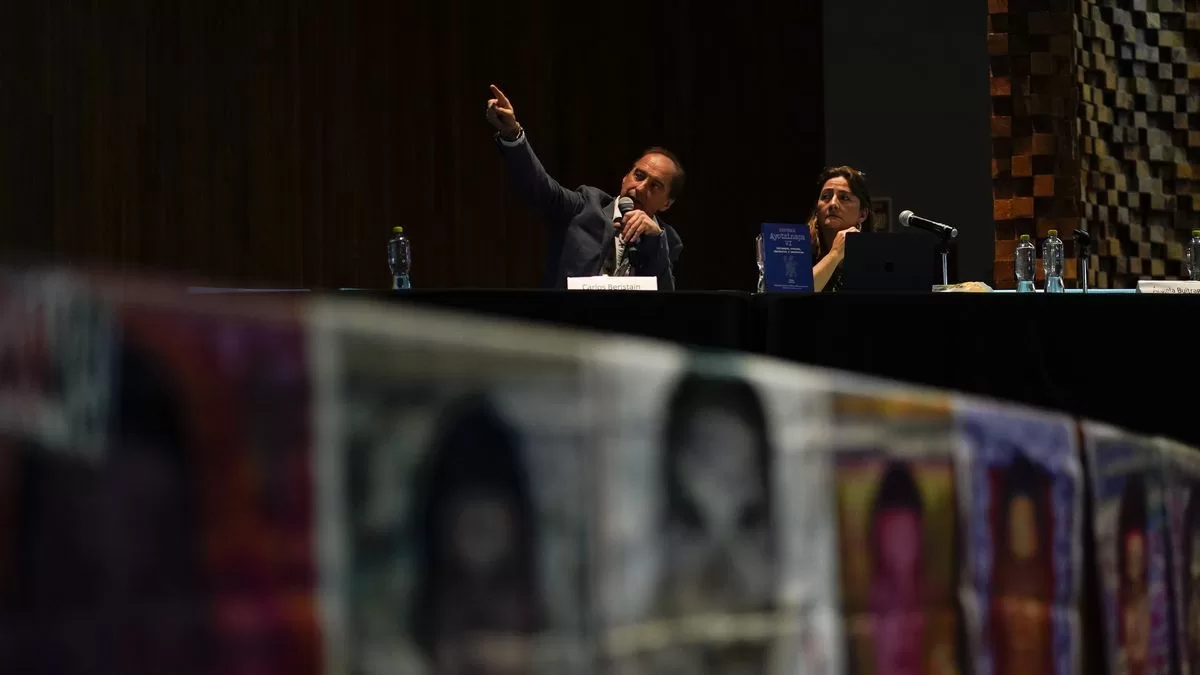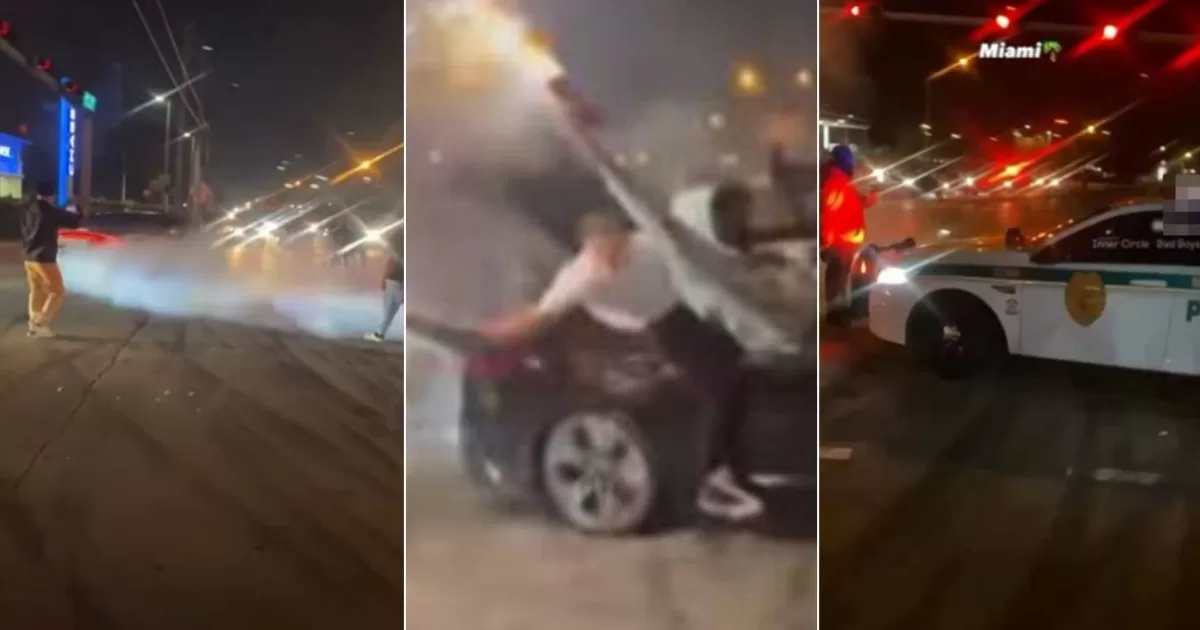“You’re like in a movie, things are happening and you say ‘this isn’t real'” and you have to discern, as a team, what is true and what is not to make quick decisions but from a distance and thus avoid being “trapped”, explained the Spanish doctor Carlos Beristain. “It was a permanent exercise, very tiring, very stressful.” In addition, the false reality was, paradoxically, the best documented.
Beristain and former Colombian prosecutor Ángela Buitrago were part of the group sent to Mexico by the Inter-American Commission on Human Rights (IACHR) to help clarify what is known as the “Ayotzinapa case”, a “State crime”, according to the current government, because in authorities and security forces at all levels participated in the attack or its cover-up in collusion with organized crime.
Shortly before handing over their diplomatic passports, the experts shared with The Associated Press the lesser-known part of their work: the absurdities in which they found themselves immersed, the frustration of still not knowing what happened to the young people, but also the satisfaction of leaving behind evidence. enough to move forward if there is political will to do so.
Both said they felt grateful to the parents of the students, peasants who gave meaning to their work and who from the first moment only asked them two things: not to lie to them and not to sell themselves out. They understood the second requirement much later, Beristain acknowledged, when they became aware of the corrupting power of institutions.
The group -first also made up of former Guatemalan attorney general Claudia Paz, Chilean criminal lawyer Francisco Cox and Colombian lawyer Alejandro Valencia- was in Mexico for two periods: 14 months during the administration of Enrique Peña Nieto (2012-2018) and three years during the current administration of Andrés Manuel López Obrador.
They felt that the first government expelled them -although technically what it did was not renew their mandate-, when they began to demolish the official version of the facts that the 43 young people had been burned in a garbage dump and their remains thrown into a river and suggested that it was based on the manipulation of evidence and torture, as later verified by the justice system and the prosecution.
Now, despite the advances and arrests recorded -such as that of a dozen soldiers or that of the former Attorney General-, their work was blocked by the Army and the Navy who continue to hide information, they denounced.
Buitrago recalled the first months of 2015 reading together with Cox and Paz the 85 volumes of the file -of a thousand pages each- in a gloomy basement and that in the face of any inconsistency they commented on, something new appeared that clarified it.
If they wondered how with a few kilos of wood they had been able to keep a bonfire alive in the rain to burn 43 people, a week later they were notified of the capture of a new detainee who, coincidentally, confessed to having used more wood and also, tires and fuel, Buitrago explained. “The time came when (her colleagues) asked me not to say what was missing again,” added the Colombian.
They were also struck by the honesty of Mexican criminals, who always “voluntarily” and almost exactly confessed to having participated in the crime even though the reason for the arrest was, for example, carrying drugs and weapons. Or the clumsiness of an alleged criminal who, although theoretically he had participated in the mass disappearance, did not hesitate to go to the Attorney General’s Office to do some paperwork, where he was arrested.
“This never happens in a criminal life,” said Buitrago.
The former prosecutor and also a sociologist described that period as a kind of “masquerade” ball where the authorities on the one hand tried to impress and please them and on the other they did everything possible, legal or not, so that their version would stand up.
There were always officials who helped them despite fear, they said. Others, however, received them boasting of their readings on “torture techniques.”
The more the official version was dismantled, the more harassed they felt. “I started not sleeping,” Beristain acknowledged. “It was evident that there was a strategy to involve us, that it was not very explicit, that you could not denounce it, but that it was evident” intended to “make us pay a political cost and that there would be no progress.”
According to both, the cohesion of the team saved them. The garden of the hotel where they were staying was the “anti-stress room”. Buitrago, Cox and Paz discussed legal concepts. Beristain and Valencia opted for constant interaction with the families to feel the pain behind the file.
There was no shortage of anecdotes, some even absurd. Buitrago still laughs when he remembers visiting a dangerous area called La Carnicería where, despite having an escort of 150 policemen, they were severely attacked, but by wasps. A swarm fell on her and she was completely covered. Keeping her cool and not moving saved her. Those who ended up with serious stings were some agents who ran away.
The group scoured much of Guerrero, the impoverished, cartel-ridden state where the disappearance took place, searching for evidence and clandestine graves. Many times alone, getting “into the lion’s den,” said Buitrago, such as when they reconstructed the events of the fateful night of September 26, 2014 in the town of Iguala.
They spoke with witnesses, officials, criminals and were about to be shot at when they arrived at a prison by helicopter because, according to what a prison authority later confessed to them, no one notified them of their arrival to interview a prisoner and they feared it was a leak. .
The current government turned the investigation around, created a Truth Commission, allowed the experts to return and there were key arrests, but was again tempted to make claims without solid evidence and the military continued to block information despite orders to collaborate that the president himself, at least in public, had given them. That was when part of the group considered it useless to continue. Only Buitrago and Beristain decided to continue.
One of the worst moments of that time was when they obtained new evidence of the torture, many carried out in Navy spaces, and he had to watch hours of videos that Buitrago believes the perpetrators recorded, perhaps to show that they were following orders. They used electricity, water, bags and threats to bring their women and rape them. “I lasted a week and a half in which I felt like suffocated.”
The parents, both experts agreed, were an example of dignity. The relationship became so close that they called them “uncles.” In recent days they joked about taking their passports to prevent them from leaving.
They will continue looking for their children and the truth, which continues to slip through classified documents. When asked if the experts think there is anyone who really knows what happened, they answered in unison: “Yes, a lot.” The case is still open.
FOUNTAIN: Associated Press


